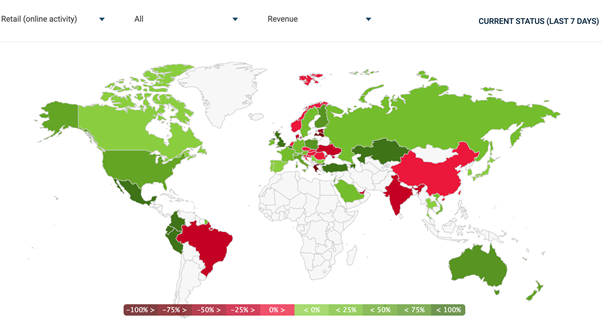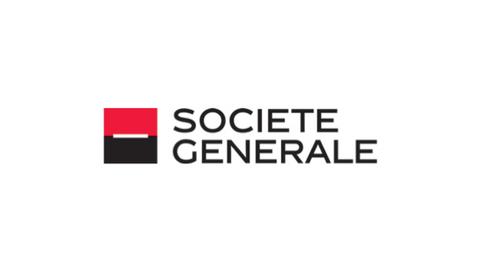Currenxie: The business opportunity created by North America’s surging eCommerce market

According to the OECD Economic Outlook, the world is headed for a 13% decline in global gross domestic product (GDP) in the first half of 2020 alone. However, while the global situation looks bleak until a viable vaccine for COVID-19 is green-lit, businesses have found a silver lining in the form of eCommerce sales.
The North American eCommerce Boom
Perhaps one of the most fascinating developments to stem from the coronavirus’ impact on society has been the way it has shaped customer buying behaviour. Today, consumers can buy everything imaginable online as they spend more time working from home and social distancing. Unsurprisingly, since January, the world’s leading online marketplace, Amazon’s stock price has soared by 66% and eBay’s rose by 55%.
Global eCommerce sales have increased by 209% since the start of the pandemic. In the US and Canada, there has been a 129% year-over-year (YOY) revenue growth in eCommerce orders, and a staggering 146% growth in all online retail orders. US eCommerce sales are projected to reach close to US$ 476.5 billion by 2024, with the Canadian eCommerce market increasing to US$ 33.3 billion.

In Latin America — home to the world’s second-largest eCommerce market — online sales revenue has increased by 230%. In the region, Mexico is at the forefront, with its eCommerce market skyrocketing by an incredible 500% — a trend that’s likely to continue. eCommerce revenue in Mexico is expected to grow to US$ 21.8 billion in 2024, if not higher.
Nearly four out of five Mexican consumers said that they intend to continue shopping online even after the pandemic is over. More than 24% of US consumers said that they wouldn’t feel comfortable shopping at brick-and-mortar stores until at least 2021, and older generation Canadians said they would likely keep taking advantage of the convenience of online shopping even after things return to normal.
With millions of North American consumers creating and reinforcing new online buying behaviours and habits as they look to keep their contact with the outside world to a minimum (industry experts project the North American eRetail market to surpass US$ 1 trillion in 2022), there is ample opportunity for companies to tap into the region if they want to emerge as market leaders.

Transitioning Your Business to the New eCommerce Reality
Alibaba and other Chinese companies’ success in Asia is largely due to the 2003 SARS crisis when many Chinese consumers were at home quarantining. While the SARS pandemic accelerated the behavioural change of the internet becoming the mass medium in China, it seems that the COVID-19 crisis will likely be the catalyst for the same permanent effect in the Western world.
With that being said, now is the time to act. While the North American eCommerce industry is highly competitive, companies that capitalise on its new reality by taking timely action can capture market share and potentially emerge after the crisis as eCommerce leaders.
Here’s what to consider when transitioning your business:
- Revisit Your Business Model: Consider exploring a digital business model or revising your current one to ensure it’s still valid in the context of digital sales channels, profit models and the services you offer. Moulding your business model to complement a digital marketplace is the first step to eCommerce success.
- Improve Your Online Presence: If your website doesn't have eCommerce functionality, invest in adding one in along with components such as live chat and support. Also, work hard to optimise your site’s SEO so its content is picked up by search engines, resulting in you bringing in new visitors to convert into customers. Overinvesting your marketing spend into the best digital marketing channels will also help get your eCommerce store seen.
- Prioritise the Customer Experience: Offer a human-centric shopping experience to your customers across different devices. Make easy-to-navigate UX design a priority, and ensure that you pick a reliable marketplace to showcase your business like Best Buy, Wish, Walmart or Amazon Mexico, as well as a reliable and secure payment gateway such as Stripe or PayPal, to make checkout seamless. If you have physical stores, ensure that they’re digitally connected to your eCommerce channel.
- Strengthen Your Existing Platforms: Ensurethat your business can cater to stronger product availability, fast last-mile deliveries and easy returns. You may need to nurture existing logistics partnerships to make this a reality. Also, be sure to pressure test your eCommerce store to check if you can keep up with demand during an increased customer flow.
- Capitalise on Collection Accounts: Seamlessly integrate with global marketplaces and get paid in US dollars (USD), Canadian dollars (CAD) and Mexican peso (MXN) with Currenxie’s collection accounts. Forming part of its Global Account® service, collection accounts allow you to withdraw the funds you make on your eCommerce store into your home bank account in your local currency at highly competitive rates. They also allow you to pay beneficiaries worldwide.
Helping eSellers Enter a Thriving Market
Currenxie is actively helping merchants seamlessly enter the eCommerce market through its Global Account® platform, enabling them to be diversified and competitive during adverse times. Currenxie clients can accept local payments from marketplaces in over 30 countries worldwide, handle multiple currencies, and make rapid, affordable cross-border payments.
As the first fintech to enable clients to get paid into local bank accounts in 10 global jurisdictions, Currenxie allows businesses to tap into global markets with local bank accounts to receive payments in the US dollar (USD), Canadian dollar (CAD), Mexican peso (MXN) Australian dollar (AUD), Japanese yen (JPY), Euro (EUR), British pound (GBP), Hong Kong dollar (HKD), Singapore dollar (SGD), and Indonesian rupiah (IDR).
In addition to business accounts and cross-border payments, Currenxie offers FX risk management solutions to help clients manage their foreign exchange exposure.











